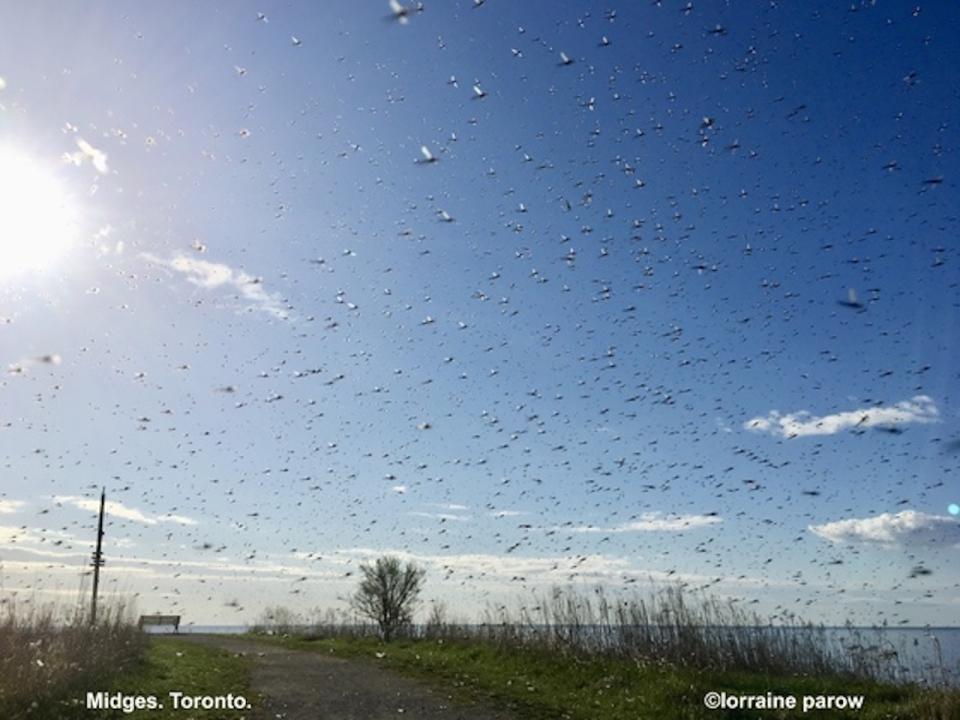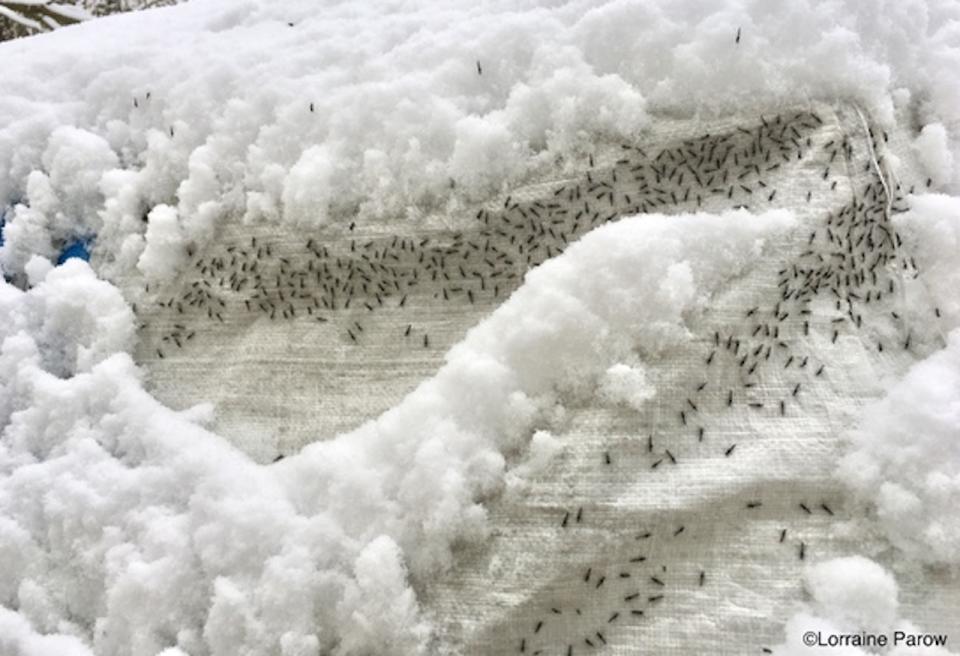A midge invasion in Ontario has begun, here's why

Spring is well underway, a sign that midges are about to invade Ontario...or have already in parts of the province.
Thousands of the insects typically surface every year, spreading out in thick swarms that cover everything from trees and rocks to the sides of homes along the lakeshores.
they're back!!!! pic.twitter.com/cmzMOcU8Sn
… they’re back!!!! Chris St.Clair👍 on Twitter: "... they're back!!!! pic.twitter.com/cmzMOcU8Sn / Twitter"
— Chris St.Clair👍 (@cstclair1) Chris St.Clair👍 on Twitter: "... they're back!!!! pic.twitter.com/cmzMOcU8Sn / Twitter"
DON’T MISS: Big, small, or mini, here are our top picks for air purifiers this summer
Midges -- also known as chironomids or lake flies -- are small, non-biting bugs that swarm collectively and, depending on your location, you may have already seen a lot of them lately.
In a previous interview with The Weather Network, Royal Ontario Museum entomologist Doug Currie said the bugs can be seen throughout the year but they're most noticeable when there are mass emergences of adults, which is most typical in the spring and fall.

Midges. (Lorraine Parow/Submitted)
They are very tiny in size. Each one measures less than one millimetre in length -- nearly invisible when on its own or when observed from afar. But, you will certainly notice them when they gather in swarms. Some groups of midges number a few thousand, while others reach into the millions.
They typically feed on plants and hatch in water, with the sunlight drawing them out. According to Currie, there are hundreds of species of midges in Canada, and each one has a unique life cycle.
Midges are important to the Great Lakes region
Stephan Marshall, a retired professor of entomology at the University of Guelph, spoke to The Weather Network about the insects in 2020.
He said midges are "phenomenally important" to the Great Lakes, beginning their life cycle in the muck at the bottom of the lakes.

Midges. (Lorraine Parow/Submitted)
“They make these cool, little silkin tubes, like salivary secretion tubes, and filter stuff [such as] algae and organic material from the muck in the bottom of the lake. [They] feed on that and develop until the fall. Then, they slow down in the cold months of winter and then they boot it up again when the ice goes out in spring and finish their larvae development,” said Marshall.
After this, midges form into a pupa, and once they are ready, they will make their way to the surface and the adults emerge. This occurs annually around the third week of May.
Although the midges may be a bit of an annoyance at times, they are vital to the nutrient cycle and are a needed food source for fish and birds, as well.
But you don't need to worry about putting bug repellent on if you encounter a swarm -- they do not bite.
WATCH: Midges overwhelm the sky on a sunny, spring day
With files from Marta Czurylowicz, video journalist, and Cheryl Santa Maria, digital writer, at The Weather Network.
Thumbnail courtesy of Lorraine Parow/Submitted.
Follow Nathan Howes on Twitter
Editor's note: This article was originally published in April 2021. It was republished with minor updates.

